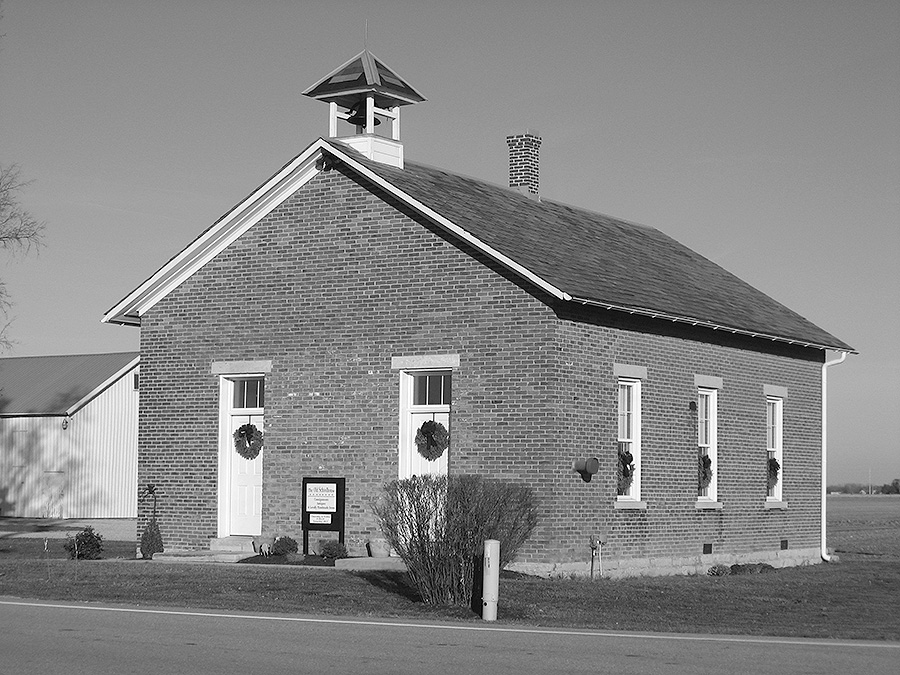By Ralph and James Boggs (1953)

THE AREA which now comprises Miami County was first within Hamilton County which was the second county established in the Northwest Territory, being formed on January 2, 1790 by proclamation of Governor St. Clair. Eight years later Ross County was established and subsequently on May 1, 1803 Montgomery County was formed from parts of Ross and Hamilton Counties and included all the lands north to Michigan, west of Champaign County to Indiana, a territory 40 by 170 miles. On January 16, 1807 a strip of land 40 by 45 miles running east to west across Montgomery County was formed into Miami County with all the land north remaining in Montgomery County which actually made two different parcels of land, both called Montgomery County. In 1812 the Legislature of Ohio put all lands north of Miami County in Miami County taking them from Montgomery, and so made Miami an area of 40 by 150 miles and extended north to Michigan. The western portion of Miami was then formed into Darke County in March 1817, leaving Miami with a territory of 20 by 50 miles. Shortly thereafter, in 1819, Shelby County was formed to the north and the present boundary was established. Miami County today contains 404.24 square miles with the greatest east-west distance being 21 miles. The north-south distance is 19 miles on the west side of the Miami River and 22 miles on the east side. Miami lies between 39 degrees, 55 minutes and 40 degrees, 11 minutes north latitude and between 84 degrees, 2 minutes and 84 degrees 26 minutes, west longitude, and is composed of twelve townships; Monroe, Bethel, Springereek, Washington, Staunton, Concord, Elizabeth, Brown, Newberry, Newton, Union and Lostcreek of which this book hereafter will deal only with the township of Newberry.
The name Miami was taken from the Indian name Miami which was the name of one of the oldest Indian Tribes in this area. The first white settler was Peter Felix, Indian Trader, and his three companions who built cabins near Staunton in the autumn of 1795 . They were followed in 1797 by John Knoop who settled east of Troy, Ohio. The population of Miami County today is 61,309 as compared with 8,851 in 1820.

NEWBERRY TOWNSHIP, organized about 1810, was prior to 1807 part of Randolph Township, which was that part of Miami County lying west of the Miami River. At that time only two townships existed, the other being Elizabeth which was east of the Miami River. Later, present Newberry and Newton were formed together under the name of Newberry but increase in population made it necessary to form two separate townships, Newberry retaining the name and the new township to the south taking the new name, Newton. The first Justice of the Peace in Newberry was Amos Perry and the first Constable was John Thompson. The approximate date of these is about 1816.
Newberry Township contains 42 square miles, is seven miles from north to south and six miles from east to west. It is located in the northwest corner of the country, bounded on the west by Darke County, on the north by Shelby, on the east by Washington Township and on the south by Newton Township. The northwestern part of the township is the most elevated in the county with the general surface sloping to the southeast. The township is drained by the Stillwater River and its tributaries; Greenville Creek, Trotters Creek, Harrisons Creek, Albaugh Creek and Rocky Branch.
The first settlers, many coming from Newberry in Newberry District in South Carolina, found here a virgin forest of many species of trees, deep rich grass and cool sparkling springs. Deep forests along the peaceful streams were abundant with all sorts of game with which the pioneers graced their tables.
During the early settlements the yellow rattlesnakes made their homes in the limestone ledges along the Stillwater River and Greenville Creek. Newberry had the reputation of having no rival in the number of venomus reptiles but the settlers soon made war on them by turning swine loose and soon the infested streams were cleared of the reptiles.
Newberry Township lies between 40 degrees 5 minutes and 40 degrees 11 minutes north latitude and between 84 degrees 19 minutes and 84 degrees 26 minutes west longitude. The present (1950) population is 5,678. The township officers at present are: trustees W. C. Davis, Russel Clark and Edward Driver, clerk, Howard Buchanan, Justice of the Peace J.D. Huffman and Constable Norman Miller.
Newberry Township, being part of that area designated as Congressional Lands, slowly commenced its settlements. The first ten men to receive patents from the government were: David Zeigler (1801), Michael Ingle (1804), Thomas Hill (1805), John Miller (1805), Sylvester Thompson (1805), Samuel Nicholson (1806), Phil Swartzell (1806), William Pearson (1806), David Burnstrager (1806), and Samuel Brown (1807).
David Zeigler, entering his land in April 1801, cannot be classified as a settler as he was a land agent in Cincinnati and probably entered land as an inducement to others. The first location and cabin built in Newberry was by a South Carolinian named McDonald, near what is now Harrisons Creek, two and one half miles north of Covington. Although he did not have a land patent he remained here one season, then returned to South Carolina with John Harrison, another dissatisfied settler from Union Township, both leaving their lands and cabins.
